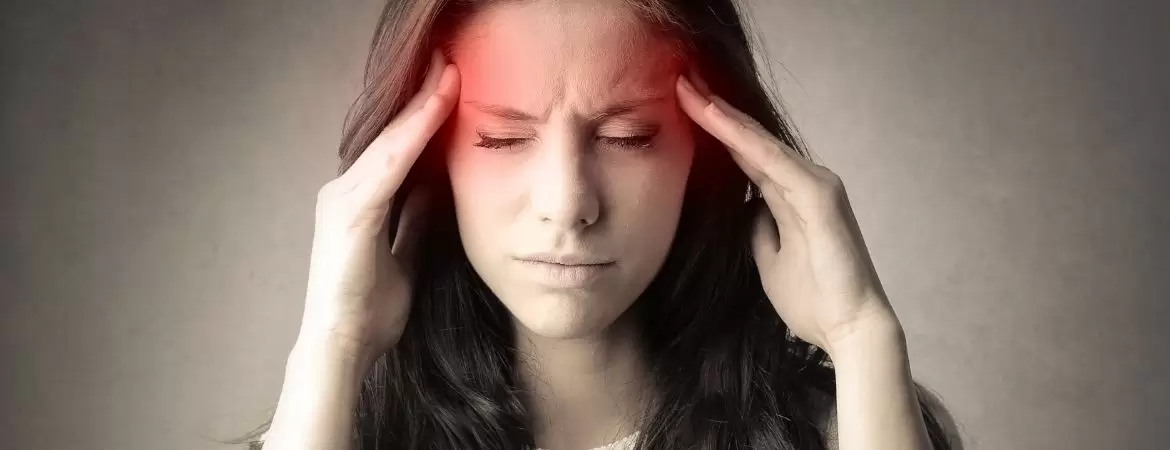
Do some irritating sounds such as chewing, tapping, and dripping make you feel aggressive? It may be a symptom of misophonia. Misophonia is a condition where certain sounds can make people feel uncomfortable. If you suspect you have misophonia, you should visit an ear nose throat hospital or clinic to get diagnosed.
Table of Contents
ToggleWhat Is Misophonia?
Misophonia is a condition where certain sounds can make people feel upset or uncomfortable in ways that might seem excessive. People who experience misophonia often describe it as certain sounds that “drive them crazy.” Misophonia causes feelings such as rage, anger and even panic.
What Happens?

People with misophonia are often bothered by sounds like chewing, breathing, or tapping. Even small repetitive movements, like someone fidgeting or tapping their foot, can trigger strong reactions. Researchers believe that individuals with misophonia might already have difficulty filtering sounds in their brains, and the repetitive nature of the “misophonic sounds” can make this problem worse.
The severity of misophonia varies from mild to severe. Mild reactions may include feeling anxious, uncomfortable, having the urge to leave, or feeling disgusted. On the other hand, more severe reactions can lead to rage, anger, hatred, panic, fear, or emotional distress.
Misophonia Causes
The exact misophonia cause is not yet fully understood, but researchers have observed a higher occurrence of misophonia in individuals who also have:
- Obsessive-Compulsive Disorder (OCD)
- Anxiety Disorders
- Tourette Syndrome
- Tinnitus
- There is also a suggested connection between misophonia and attention deficit hyperactivity disorder (ADHD). While misophonia appears to be a distinct condition, it shares some similarities and overlaps with other conditions, displaying similar symptoms.
Historically, misophonia caused people to be misdiagnosed with anxiety, phobias, or other mental health conditions. However, misophonia has unique characteristics, including:
- Typically, onset around puberty, with symptoms often appearing between ages 9 to 12.
- Women are likely to report more symptoms.
- The initial trigger often originates from a parent or family member, but new triggers can develop over time.
- Misophonia often runs in families.
Risk Factors
The factors that contribute to the development of misophonia are not clearly defined, but there are certain conditions associated with a higher risk of experiencing misophonia. These conditions include:
- Tinnitus
- Obsessive-Compulsive Disorder (OCD)
- Anxiety Disorders
- Tourette Syndrome
Symptoms of Misophonia
Misophonia is usually identified by a strong negative reaction to certain sounds. The symptoms of misophonia include:
- Feelings of annoyance, irritation, and disgust.
- Anger, or feelings of aggression.
- Nervousness when hearing triggering sounds.
- Feeling anxious or panicked.
- Tightness or pressure in the body.
- Increased blood pressure, temperature, and heart rate
These symptoms typically emerge during the preteen or teen years. If you have misophonia, you might acknowledge that your response to certain sounds is intense. However, dealing with the distress caused by these sounds or managing your strong reactions can be challenging.
Living with misophonia causes avoiding places where you often encounter triggering sounds. This avoidance can impact relationships with friends and family and may result in frequent absences from work or school. In summary, misophonia has the potential to significantly disrupt daily life.
How to Treat Misophonia?

Treatment often involves a team of experts, like audiologists and counselors, who work together to help you. They might suggest using a device, like a hearing aid that makes a soothing sound, similar to a waterfall. This noise can distract you from things that bother you and make your reactions less intense.
Another option is talk therapy, where you talk with someone about what you’re going through.
Your lifestyle choices matter too. Make sure to exercise regularly, get enough sleep, and find ways to manage stress. You can also use earplugs or headphones to block out bothersome sounds. Create quiet spaces in your home where there won’t be any noises that bother you.
Tinnitus Retraining Therapy
Originally designed for tinnitus, this therapy helps individuals learn to accept and tolerate sounds, including those that trigger misophonia. It can assist in developing coping mechanisms for dealing with trigger sounds.
Counterconditioning
This approach involves associating a less intense sound trigger with something positive or happy, such as a favorite song, a photo of a loved one, or a soothing touch. In some cases, this method has been successful in reducing the response to sound triggers.
Living with Misophonia
While there is currently no cure for misophonia causes, there are several things you can do to cope with it. When faced with trigger sounds, leaving the room might be your usual response, but this isn’t always possible.
Consider alternative strategies like using noise-canceling headphones, listening to music or calming sounds, distracting yourself with a mantra or affirmation, or politely asking the person making the sound to stop. Johnson suggests that sounds like rain or nature audio can be particularly effective, providing relief to up to 85 percent of users.
Although misophonia causes a lot of discomfort in daily life, these coping mechanisms offer ways to minimize its impact on daily life.



